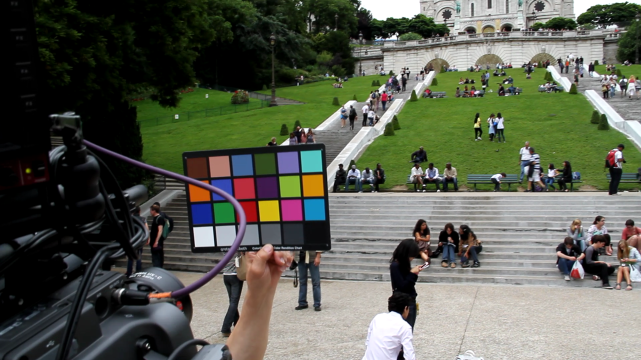Ultra-High Definition TV is the next logical step after High-Definition TV. Screen manufacturers, audiovisual service providers and broadcasters all over the world are constantly seeking to improve the Quality of Experience for end users, and they are making every effort to find possible areas of improvement in interfaces, in sound, and of course in what interests us here, namely the video quality being delivered to the screen. Colour once replaced black and white, then HD gradually took over from Standard Definition, and now it is Ultra-High Definition that is poised to come into our homes. After recently being put in the limelight by a series of announcements made at the latest Consumer Electronics Show (in January 2015 in Las Vegas), like the creation of a “UHDTV Alliance”, Ultra-High Definition is now being boosted by international standardization bodies, concerned about not being pre-empted by proprietary interests. But what is the truth of the matter? Is Ultra-High Definition technically any different from High Definition? What kind of visual experience does it deliver to viewers? Here are a few answers…
What is Ultra-High Definition?
The specific features of Ultra-High Definition stem from the changes in the four characteristics of television signals: spatial definition (are details perceptible?), colour reproduction (are they those of the real world?), contrast (do bright scenes allow nuances in the shades?) and motion (why do we get blurriness and jerkiness on TV but not in the real world?)
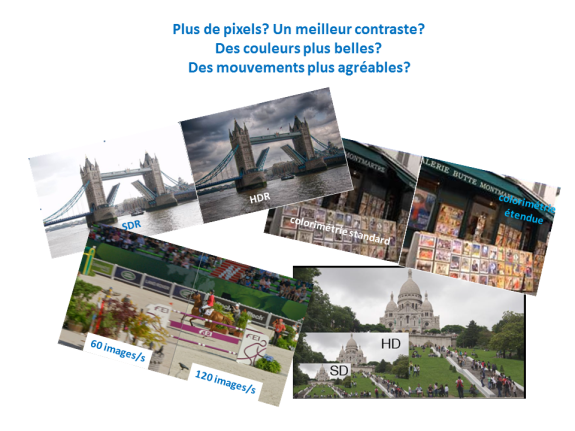
To carry out studies on improving these different components, Orange Labs LogoHD-1024x988leads the collaborative project “4EVER” (for Enhanced Video ExpeRience, www.4ever-project.com), working there with eight French industrial and academic partners (France Télévisions, Globecast, Technicolor, ATEME, Highlands Technology Solutions, TeamCast, INSA/IETR and Télécom ParisTech).
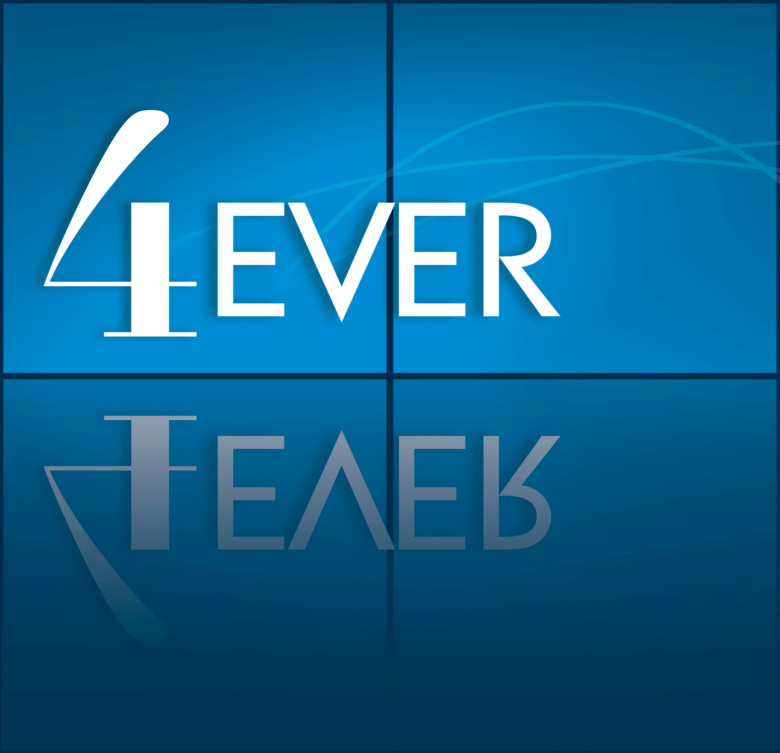
Spatial definition affects the definition, the meshing and the visible details, according to the amount of pixels contained in each picture. “Ultra-High Definition” produces twice as many lines and twice as many columns as current High Definition. So with four times more pixels, one could hope that the viewer’s experience would be improved, that details would be more visible, that the meshing would be better. Yet surveys conducted worldwide, including at Orange Labs, have shown that the perceived experience is indeed better… but that this benefit is limited, and also that it only works if the viewer is positioned at a distance equivalent to 1.5 times the height of the TV screen (see the explanations at the end of the article). Which for a 50 inches screen, means sitting less than one meter away from the screen! But in European homes, the average distance between the TV screen and the couch is 3 meters. So under current housing conditions, this means that we should all get 100 inches screens or larger to fully appreciate the benefits of this format, popularly known as “4K”.
We note that this increased spatial dimension, meaning this 4K, is currently standardized under the term of “Ultra-High Definition phase 1”. The other components listed below will be addressed via a “phase 2”.
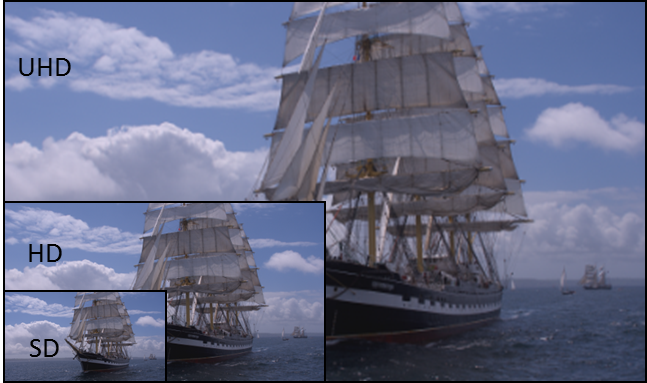
Colour reproduction is related to a range of colours (the “gamut”) which the camera is able to acquire and the screen able to display. With current technology, it is difficult to perfectly reproduce all of the colours that the human eye can perceive. The range of colours currently in use in television is standardized and illustrated in the figure below by a blue triangle contained within the large range of colours that can be perceived by the eye. Current standardization authorities are suggesting an extension of this TV colours triangle so it can more accurately reproduce all natural colours and so come closer to what the eye can see. This is referred to as a Wide Colour Gamut (WCG), represented by the white triangle in the figure.
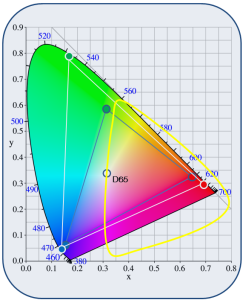
Contrast depends on what is known as the “dynamics” of an image, meaning the difference between maximum brightness and minimum brightness in the image. The amount of brightness levels between minimum and maximum is also crucial to ensure optimal perception of contrast (level continuity). The human eye is more sensitive than what present-day technology can deliver in terms of reproduction, because of the limitations in both the camera and the screen, but HDR (High Dynamic Range) technology can bring out details in both the dark and bright zones of a same picture.

Motion rendering is linked to the image frequency; it determines the amount of successive frames running at a given rate so as to make up the video. For optimal reproduction, under certain conditions in motion the human eye requires up to 700 frames per second to be displayed. However, current frequencies in television do not exceed 50 or 60 frames per second (24 in cinemas), and so for the zones of an image with substantial motion, viewers may perceive some background jerkiness or blurriness. But nowadays it is possible to improve the rendering of zones with substantial motion by increasing the frequency using High Frame Rate (HFR) which can reach up to 100, 120 (or even 200, 240 and 300, 360) frames per second, thus delivering better motion fluidity.
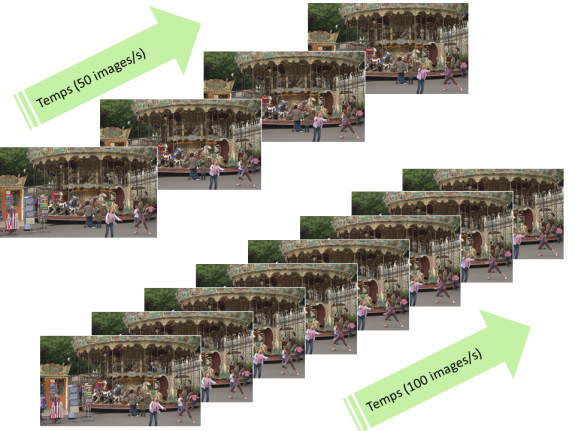
So then, is it Ultra better, or just… Ultra technological?
In the face of the arrival of new technologies, it is critical to perform independent assessments on the final rendering by the solutions producer’s. In the case of Ultra-High Definition, it is up to standardization agencies and consortiums like 4EVER (www.4ever-project.com) to perform such assessments on the audiovisual chain end to end.
To that end, research engineers at Orange Labs are taking part in the development of methods to assess perceived quality. Then, they implement these methods in screening rooms featuring highly specific viewing conditions (lighting, wall colour, distance to the screen) where they invite “testers” to come, usually people from the “general public” (i.e. not video technology experts). The testers then watch video sequences, some in Ultra-High Definition and some in lower definitions, and they report their opinion in the form of a mark on a scale of 0 to 100 for five elements of quality: “Very Good”, “Good”, “Fair”, “Bad”, “Very Bad”. They are not told which technology is behind the sequence which they are in the process of appraising.
Known as “subjective”, because they are based on the opinion of testers after visualization, those tests can generate statistics on the benefit of the various Ultra-High Definition technologies from the standpoint of visual perception.
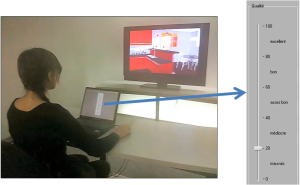
Accordingly, we now know that going from HD to UHD phase 1 (i.e. the current “4K”) only improves perception by ten points on a scale of 100, while going to High Definition had rated thirty points. In addition, we know that those ten points are only valid if viewers are sitting at a distance equivalent to 1.5 times the height of the screen, because at three times the height of the screen, the gap is even smaller, not to say inexistent.

We also know, since tests were conducted at Orange Labs in December 2014/January 2015, that going to 120 images per second (HFR) will increase perceived quality by twenty points for content with substantial motion, and this whatever the distance from the screen.
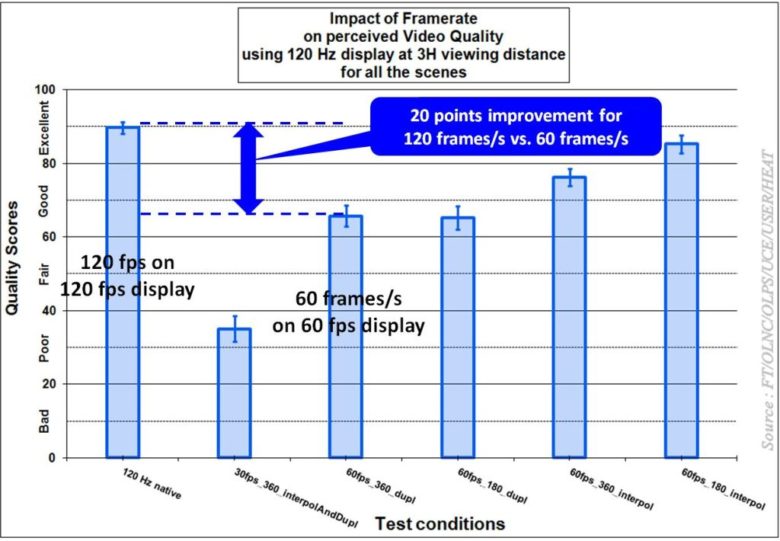
In addition, we know that using HDR technology will itself increase perceived quality by about twenty points. However, when the video sequence is too bright, testers report some visual discomfort. Efforts are underway to determine a maximum brightness threshold to be displayed on the screen without causing discomfort.
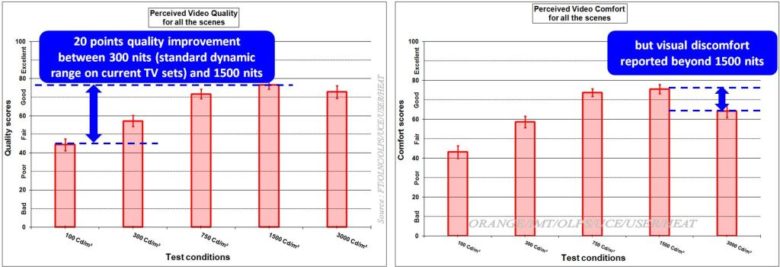
B: details of the work and tests that were performed (sequences used, number of observers, material conditions etc.) were presented at the EBU’s (European Broadcast Union) Product Technology Seminar on January 29th, 2015. Please contact the author if you require further information.
What remains to be done now is to assess the benefit of the various elements of Ultra-High Definition as explained above once they are combined with one another (more contrast and more colours, more pixels and more frames per second etc.). Then it will be a matter of validating the findings for production, broadcast and display equipment in keeping with set standards. And make sure that these technologies can be implemented realistically among live TV channels, which stands as the hardest textbook case to achieve.
All this so as to determine the content of tomorrow’s digital TV standards to the benefit of the end user… meaning to the benefit of us all!
